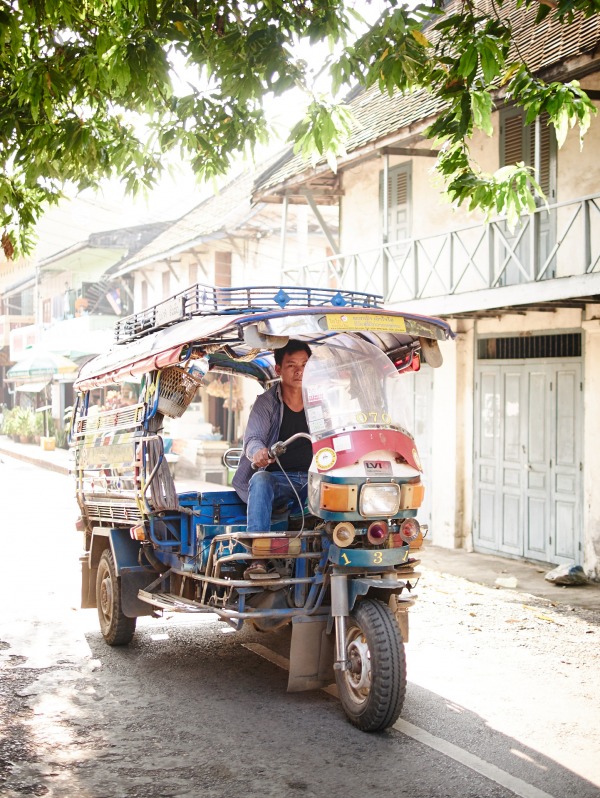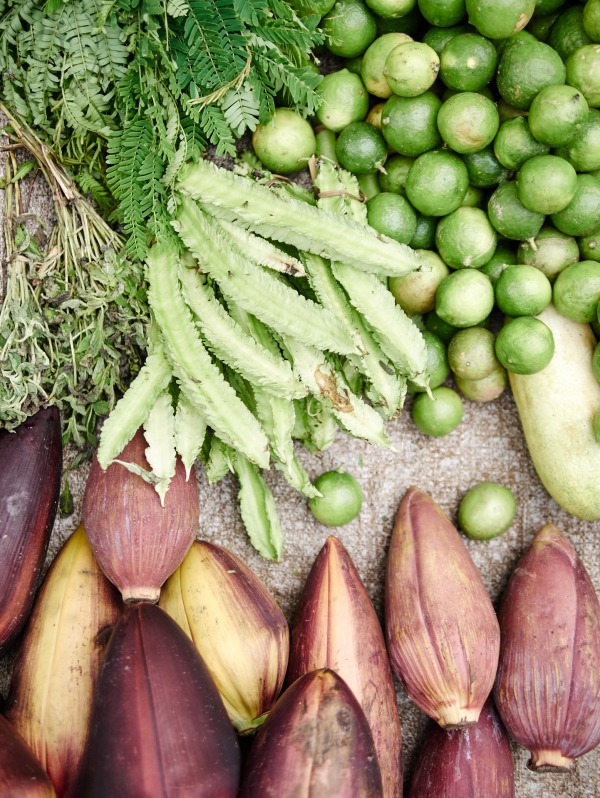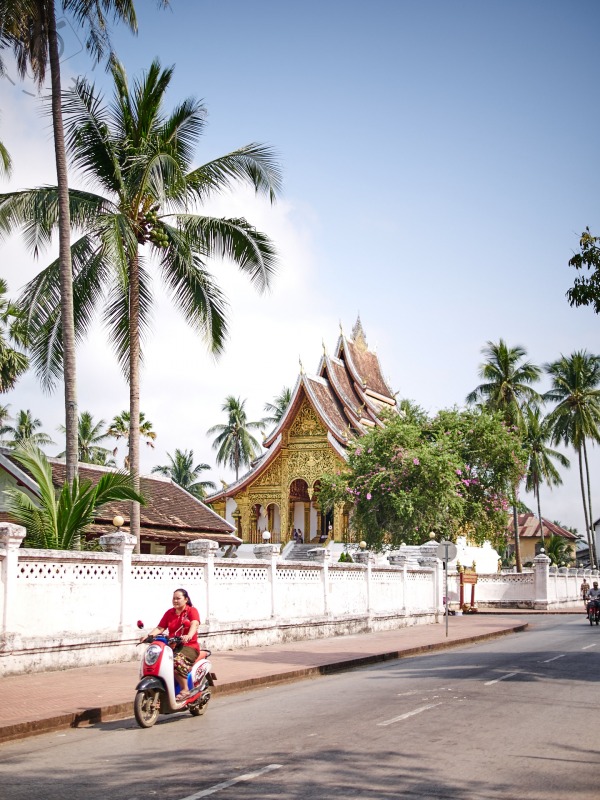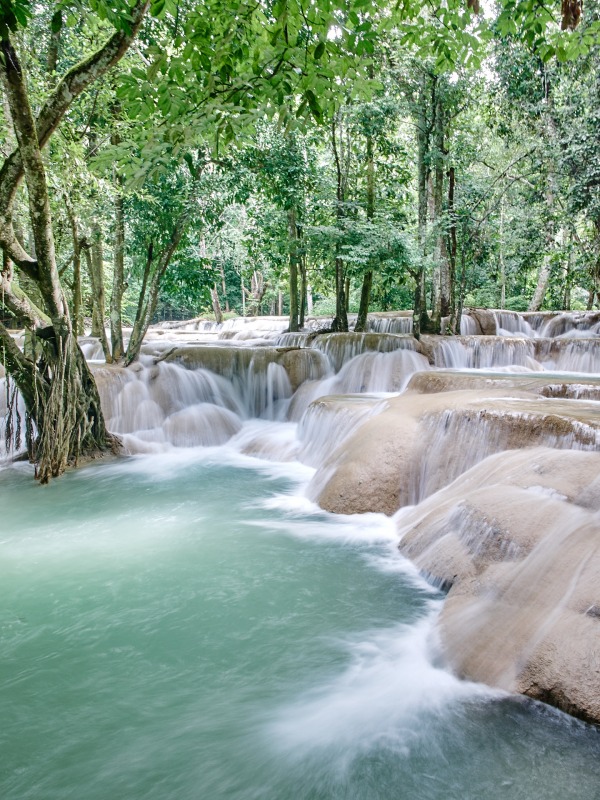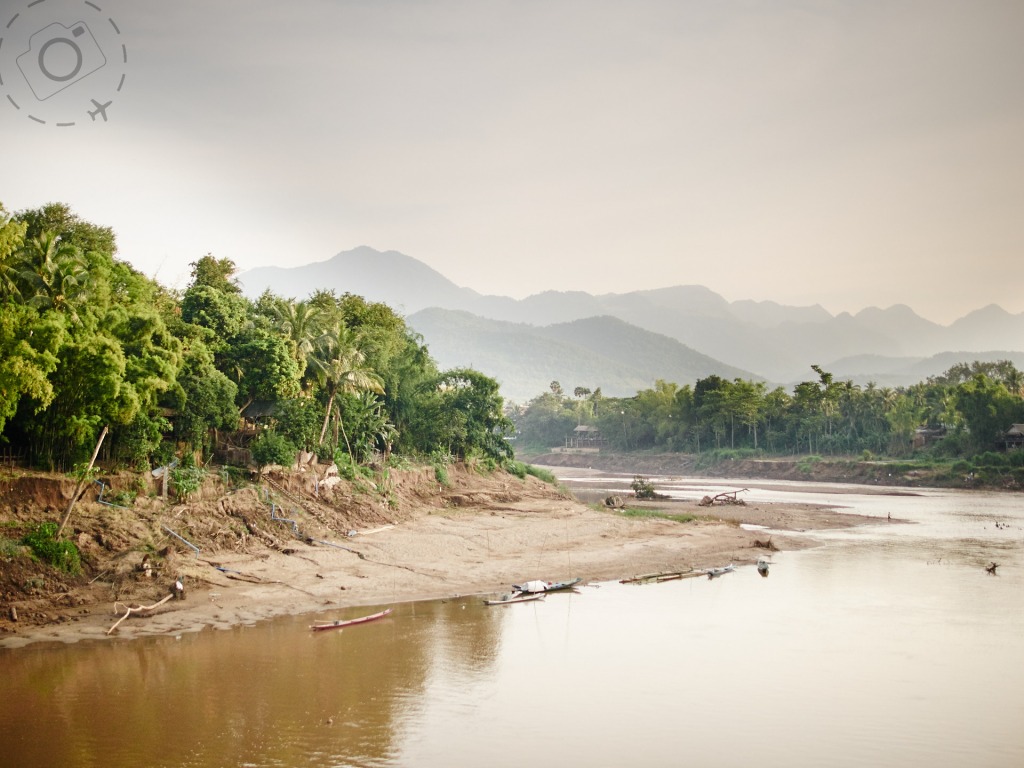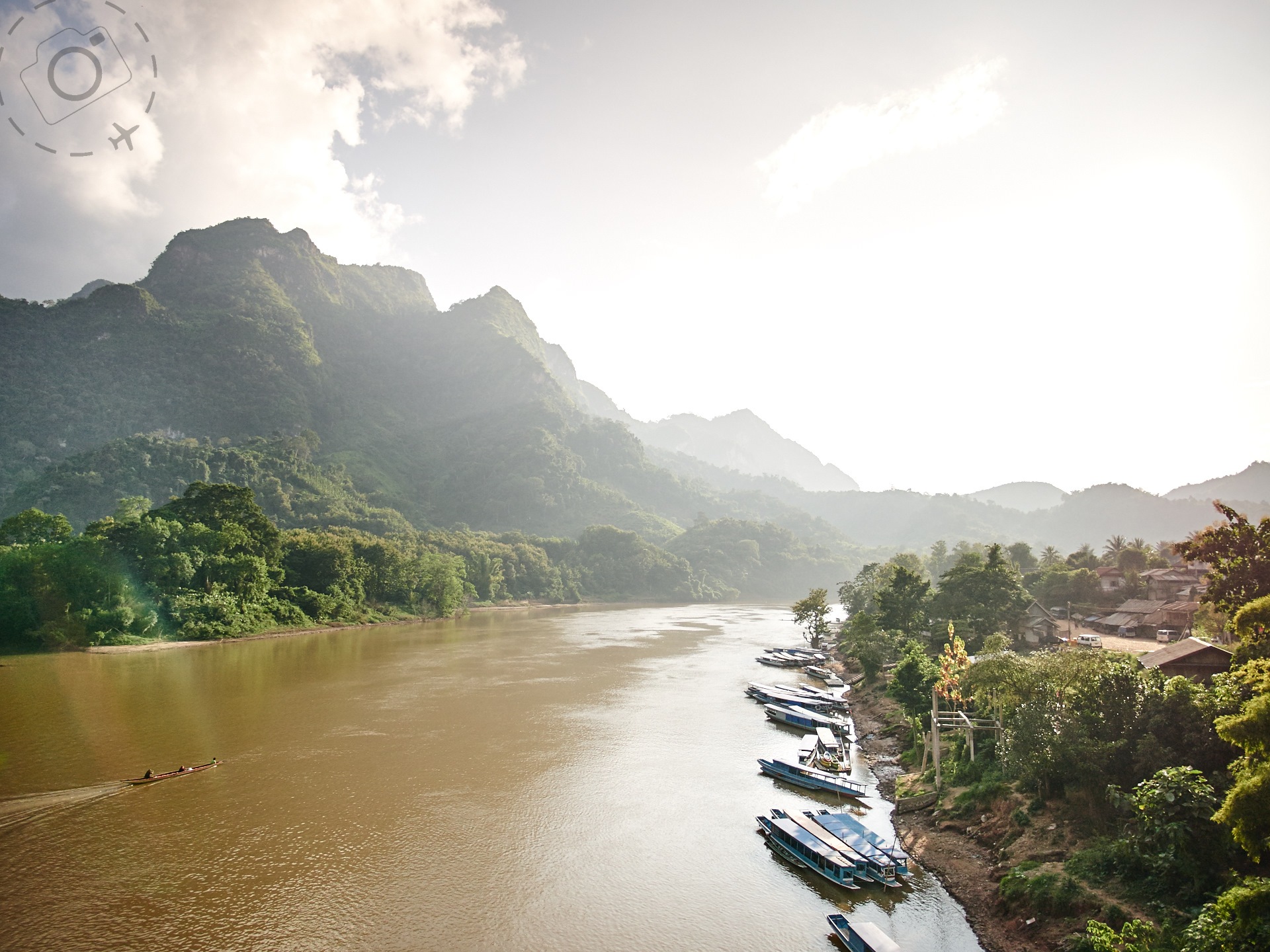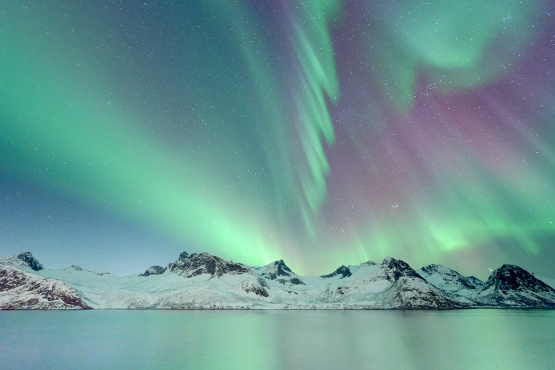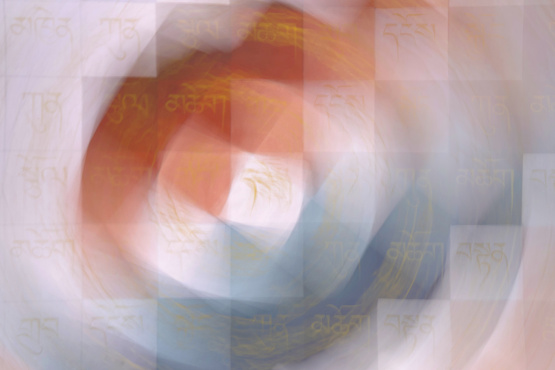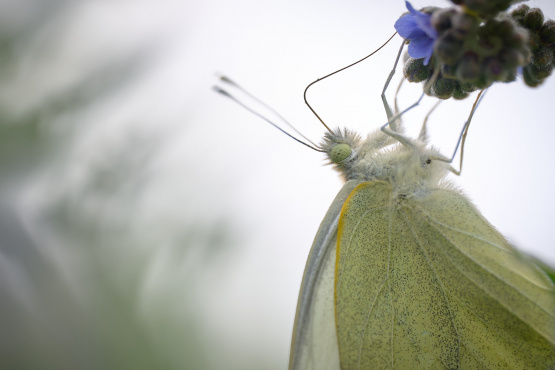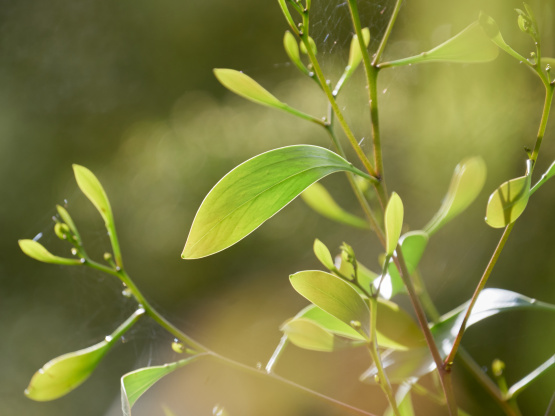Flies to Honey
Tak Bak is the daily ritual of monks collecting alms in Luang Prabang. At dawn the resident monks of the temples gather together and walk the streets in single file, collecting rice and food from the people who live nearby. It's a beautiful sight, a noble tradition and a photographic draw card.
The old town of Luang Prabang sits between the confluence of the Mekong River (Me Nam Kong) and the Nam Khan. An amazing concentration of golden temples have been built in the narrow spit of land between the rivers, traditionally the most important location in the country for monks to study and learn. One of the temples in Luang Prabang, Vat Xiengthong, is where the Kings were coronated under the auspice of Laos' most spiritual figures.
Tak Bak in the old town of Luang Prabang has so may lines of monks from each temple that it can look like one giant line of monks as far as the eyes can see.
The peak season for tourists is when the winter air is dry and cool, and tourists from Europe, China and Australia fill the guesthouses and hotels in the newer parts of town. Cars, vans and tuk tuks line the streets to drop off travellers and the UNESCO Heritage Listed facades of Luang Prabang are hidden behind a layer of transport. Vehicles moving from one place to another detract from the serenity of the moment, and sometimes even cut through a line of monks.
The tourists themselves make a massive impact, mostly through the sheer numbers on the street more than specific examples of bad behaviour. There's always one or two over zealous types who run alongside the monks at close range, or fire off their flash directly in someones face. These people are rare, but the volume of cameras pointed at the monks and clicking away is by far the most notable impact of tourism.
You see more tourists on the street here at 7am than midday. For photographers it simply means you have to give up on the idea of monks walking past lovely big temples in the middle of town, and go searching for a quiet spot away from the pack.
Many tourists take part in Tak Bak instead of just taking photos. Following the rules to dress appropriately, keep your head low and present yourself in a clean and tidy manner are easy enough to follow. Ensuring your offering of food is helpful and worthy of merit is a little bit tricky. A handful of women walk the streets trying to sell little bundles of sticky rice or bananas to sell to tourists who can then donate them to the monks. Often the food is not hygienic or was left over from the day before.
Even if you make plans to gather useful alms for the monks, there is frequently too many tourists in one place and those monks passing by end up with far too much food that they can't possibly use. Too much food is not meritorious food either. Children hang around the sections popular with tourists and hold out their own baskets. As the monks walk past the children they unload the excess food in the hope it wont be wasted.

Conscious of Your Conscience
When you decide it's time to jump in and start shooting too there's an uneasy feeling about the process. If you have the least bit of conscience you know something is not quite right about waiting with camera as the monks approach. It's not even just the intrusion on their spiritual journey, although that alone makes you wonder about options for levelling your karma account. It's the lack of explicit consent.
The practice of photographing monks in Luang Prabang has been deemed acceptable for a long time, but unlike most photographic images I shoot there is no way for me to get consent before taking photos. The only consent is a tacit one because everybody does it and the entire tourism industry encourages it. The monks themselves do not protest the cameras, but the rules of Tak Bak prohibit communication during the alms walk, verbal or otherwise. They must remain passive and untouchable.
That leaves little scope for images that express engagement with the subject.
Not only is their no opportunity for direct consent, but there's no cultural exchange at all. It's all one way as the camera takes photos. My travels in Asia are founded on the principle of experience and engagement, two principles that demonstrate respect for the locals you meet and lead to intimate photography. The more you engage with your subject the more your photos will speak to an audience. Shooting monks at dawn in Luang Prabang takes away that engagement, at least during Tak Bak.
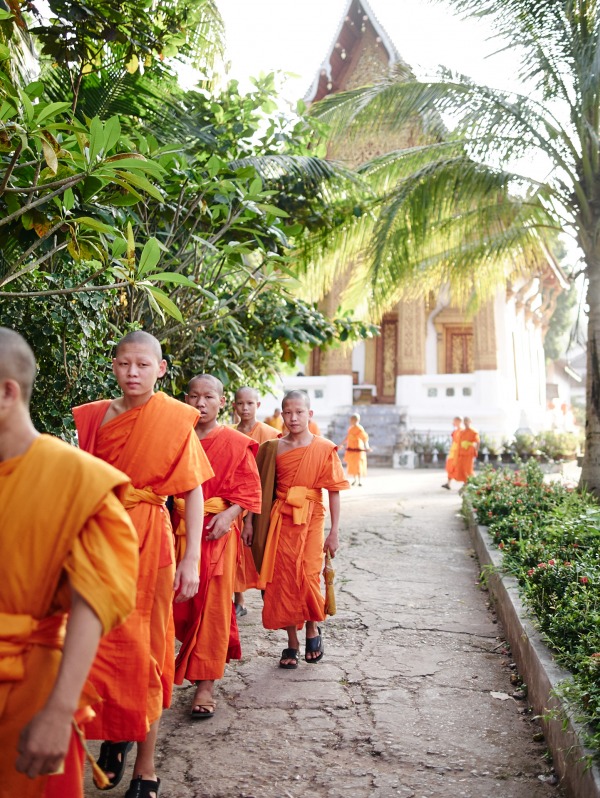
Monkly Magic
The good news is that for the rest of your time in Luang Prabang there are loads of opportunity to talk to the monks and have that engagement you don't get during morning alms. Take the time to go slow through temples during the day and you'll meet monks who are keen to practice their English skills. It's a great opportunity to talk to them about Tak Bak and see how they feel about it.
Mostly they're not concerned about the cameras, more worried about getting dodgy rice from well meaning tourists wishing to participate. Monks I have chatted to just laugh about the photographers, echoing the sentiment that most visitors behave with respect while a few simply get too excited. It's nice to have the chance to get a point of view from the monks themselves, and take a few portraits in the process.
Just after sunset one night I was wandering through a temple on my way back to the hotel. A monk was sitting under a tree and with my ISO cranked up to 6400 I took a few shots. He thought I was crazy and so showed him the results. So impressed with the ability to shoot images in the dark he kidnapped me and my camera, taking me into a temple and lighting candles. He insisted I take photos of his merit making, and asked me to send him a copy by mail.
That is how I remember Luang Prabang, a place where the monks wander the streets in the morning but share their spirit all day long. Just one reason Luang Prabang is my favourite town in Asia.
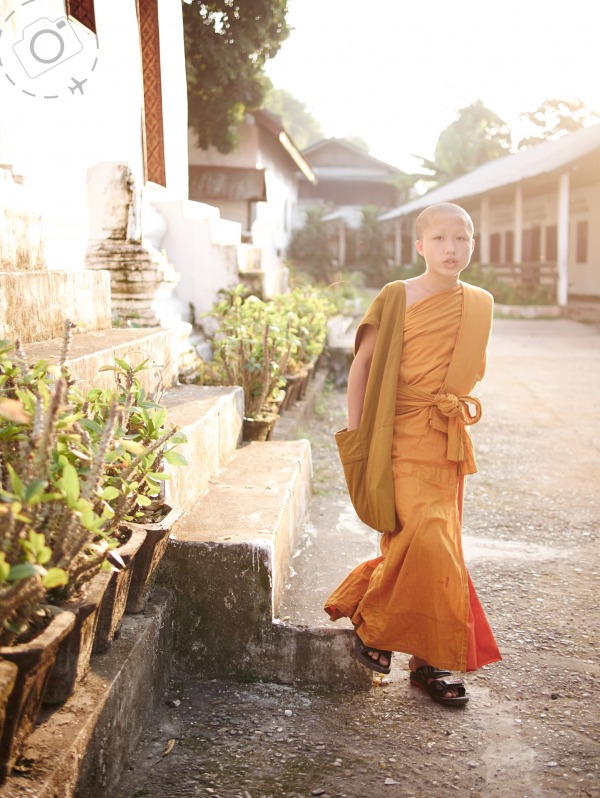
Highlights for Photographers in Luang Prabang
Morning Meeting
Before the monks leave their temple they gather at the gates and chat. It's a friendly moment that contains within it the characters and human spirit that hides beneath the saffron robes. This takes place very early, about 615 am in winter, and the light is extremely low due to mist in the air.
Against the Wall
Pick a nice wall with a few monks in stride going past. Monks have to slow down bunch up as the get near a offering of alms, ad then thin out as they move on. Pick a spot with the right spread between monks.
Give and Take
In between lines of monks have a chat with the locals giving alms, they are also photogenic and very friendly to us annoying tourists. Get up close to the baskets of sticky rice, the lovely old ladies and their elegant houses. The quiet streets off the main thoroughfare are most photogenic, not surprisingly.
Ghosts in the Mist
Slow shutter work is nice with lines of monks blurring in the background. Tripods look extra imposing here, but low light and slow monks makes for a nice blend of saffron inspired scenes. Pick a spot that makes a lovely scene on its own, but one that a few ghost-like monks can add a special element.
Me Nam Kong
The Mekong River at sunset is brilliant, with the sun setting behind a nearby hill and flooding the river banks with orange light. Head to the junction of the Nam Khan and Me Nam Kong (The Mekong River) and shoot back towards the main pier. Dry season is essential for sunset in Laos, and the smoke from villages ensures orange hues.
Bringing the Nam Khan
Bamboo bridges cross the Nam Khan on the opposite side of town to the Mekong, and every afternoon young novices return to their temples after school. The late light is lovely along the Khan too, especially with shadows of monks on the bridge or kids splashing about in the river.
Amazing Markets
The morning market near the National Museum, hidden behind the main street, is excellent for colours, culture and crazy foods. Really fresh produce presented on banana leaves and bundled with bamboo twine offer ample inspiration. This is also a great place for local soup at breakfast or grilled treats. Get in early, it cools off around 9am. Return again in the evening for street eats, with 10,000 kip dinner plates (pile it high from the Laos style buffet) or grab a stick of chicken grilled over hot coals.
Get Out of Town
Nearby villages offer a chance to meet ethnic minorities such as Khmu, Hmong, Thai Le and others. Plenty of tourist services travel to touristy villages, but find a local driver to take you away from the crowds for a day and you won't regret it. It's even worth heading out of town for a night and staying in Nong Khiaw, a little to the north but less busy compared to Luang Prabang.
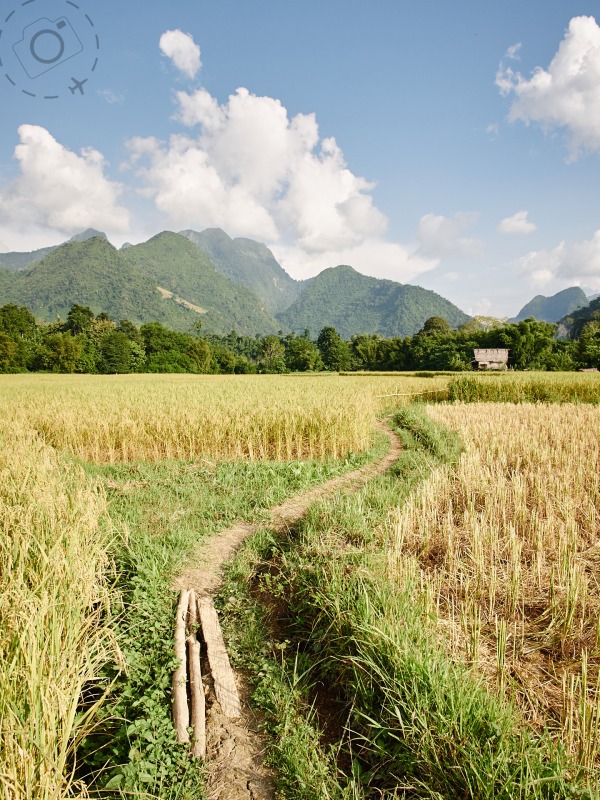

The Short Version
The number of tourists milling about the monks during Tak Bak makes it a tough place to shoot, you simply have to avoid the crowds. That is possible if you spend the time to seek out quiet places further from the main rush of tourists. Unlike most photography in Asia the morning alms experience wont give you an intimate exchange, because you're taking photos and giving nothing back. That's not a feeling I encourage. But there are lots of opportunities to engage with monks after the morning alms have finished. No doubt the monks of Laos are very special, but the charms of Luang Prabang go far beyond the saffron robes, and far beyond the Mekong for that matter.
